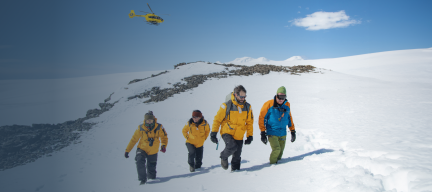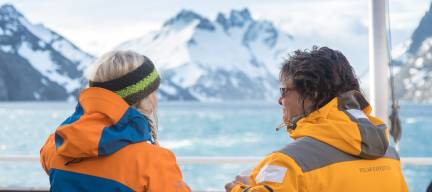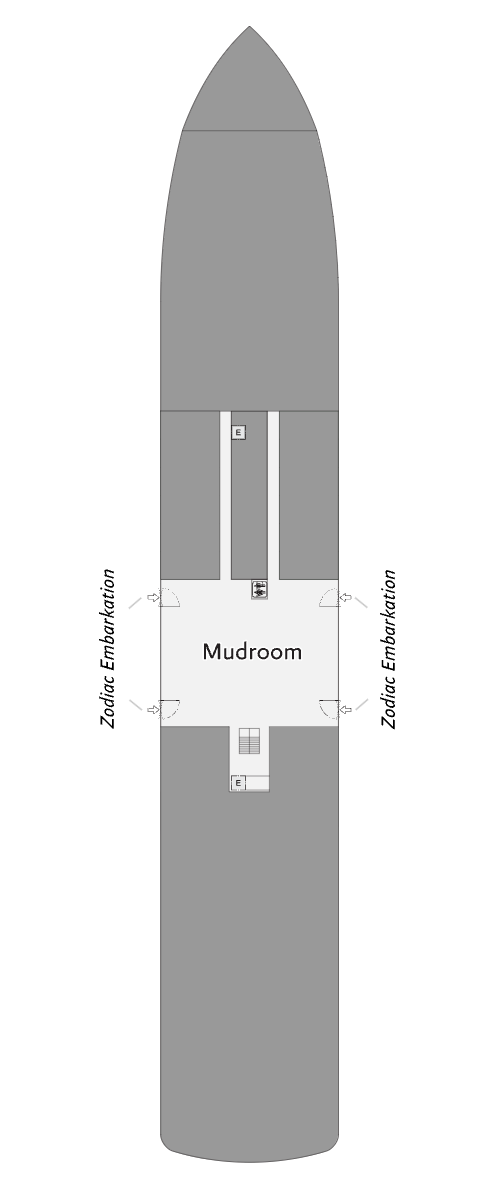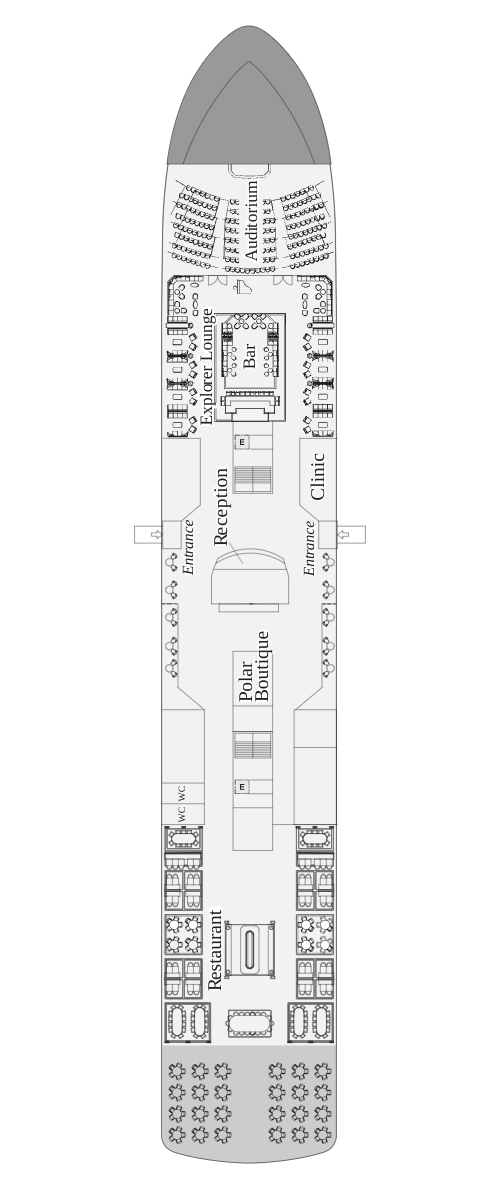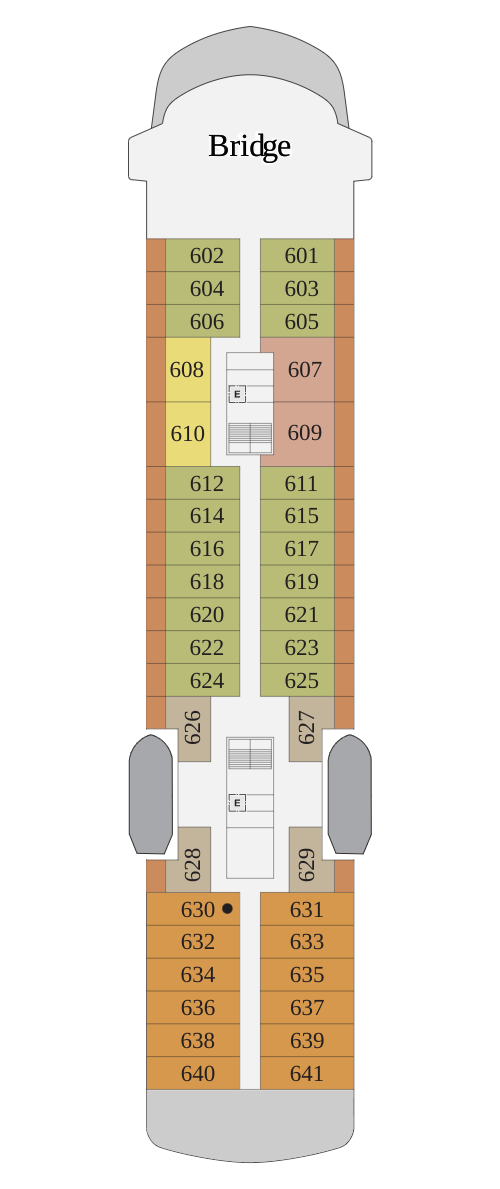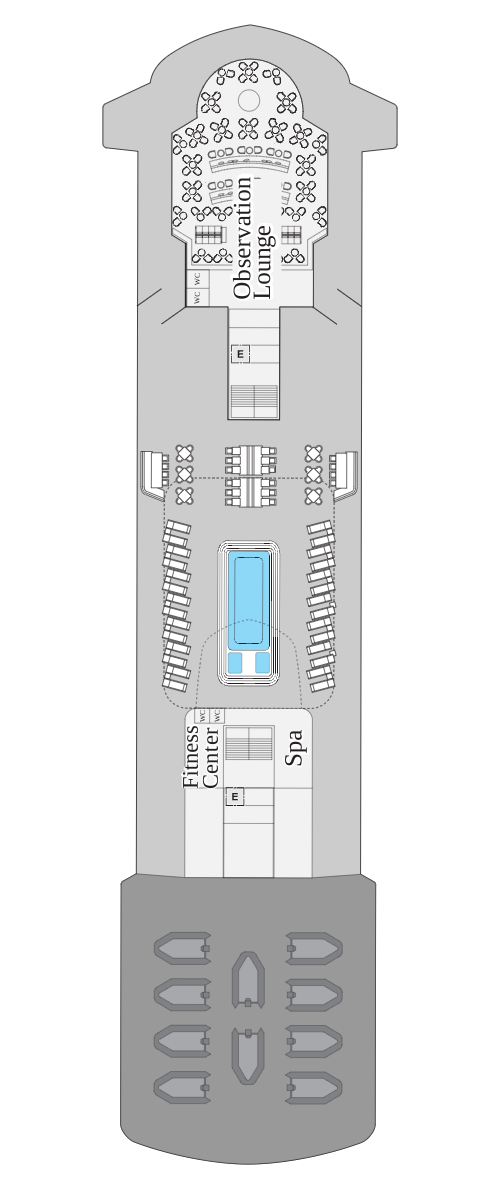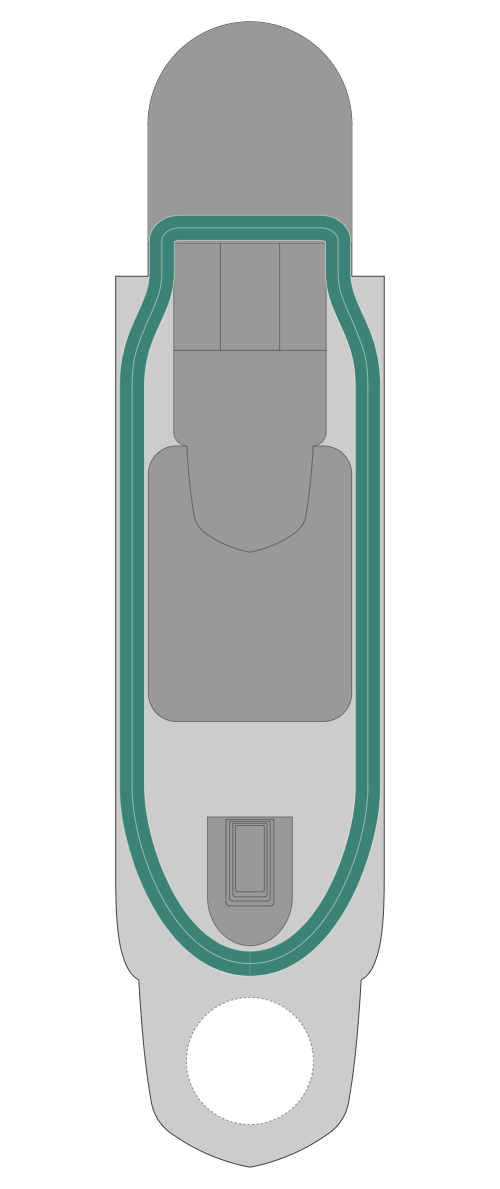South Georgia and Antarctic Peninsula Penguin Safari
Starting from
- Ushuaia, Argentina
Ships
- Ocean Explorer
- World Explorer
Departures



















Expedition Overview
Our South Georgia and Antarctica: Penguin Safari itinerary is the fastest way to get to the seldom visited South Georgia Island while also setting foot on the 7th continent. As we set sail, photograph massive albatross and beautiful pintado petrels as they swoop and soar around the ship, guiding us toward South Georgia. Beaches teeming with king penguins and elephant seals greet us on this fabled island, where we’ll pay our respects to famed explorer Sir Ernest Shackleton. Antarctica awaits, with its soaring peaks and staggering expanse. Go further into the Antarctic sea on a Zodiac, experience the rugged peninsula from a sea kayak, undertake an exhilarating hike up a sparkling glacier, or share an endearingly comical moment with an inquisitive gentoo, chinstrap and Adélie penguin. In these ways and countless others, Antarctica will amaze, surprise and delight.
Highlights
See South Georgia’s incredible wildlife, including 30 breeding bird species and four penguin species
Follow in the wake of Sir Ernest Shackleton’s perilous voyages to South Georgia and pause for a moment at his grave site
Explore the Antarctic Peninsula by ship, Zodiac and foot
Enjoy presentations on wildlife, history, glaciology & geology by our onboard polar experts
Immerse yourself in the icy realm of the Antarctic, with an optional paddling excursion
Find Your Ideal Itinerary
From Ushuaia, Argentina, 18 days, on Ocean Explorer, World Explorer
- Duration
- 18 days
- Departing from
- Ushuaia, Argentina
- Ship
-
Ocean Explorer
Learn more about the ship -
World Explorer
Learn more about the ship - Starting from
- $21,277 USD per person

You will begin your journey in Ushuaia, a small but bustling port at the tip of South America. It’s the ideal gateway for you to explore the southern extent of Patagonia while preparing for your adventure ahead. Get active in the mountains or enjoy handcrafted chocolate at a café in town.
Embarkation will occur in the late afternoon, after which your vessel will sail down the historic Beagle Channel, which transects the Tierra del Fuego archipelago in the extreme south of South America. Expect an air of anticipation as you depart!
There are many activities to keep you engaged while you are at sea. Learn to identify seabirds that glide alongside the ship, or attend dynamic presentations by your Expedition Team. You will be prepped on safety procedures for Zodiac cruises and shore landings, and also be given instructions for getting the most out of your optional sea kayaking adventures (extra cost), a truly intimate way to experience Antarctica.
If conditions are right, the first indication that you are approaching South Georgia is the sight of birds around a group of rocky spires called Shag Rocks. Have your binoculars and cameras ready to capture these rocky spires rising out of the icy ocean waters. Shags and prions often rest here, and due to nutrient rich upwellings around the rocks it can be a good place to keep a lookout for whales.
After enjoying South Georgia from a distance, we’ll head toward its numerous beaches to find a bay for your first excursion. Landing sites are varied, largely determined by the weather conditions of your voyage. The sites you visit will provide you with wildlife encounters unrivaled anywhere else on Earth.
South Georgia is one of the most fertile breeding grounds in the world for sub-Antarctic wildlife, with beaches blanketed with penguins and seals. It won’t take you long to realize that you are in a birder’s paradise, as burrowing seabirds, albatross and petrels can be seen in abundance. You’ll find that South Georgia, once a popular base for whalers and sealers, is also scattered with abandoned relics and evidence of human activity from centuries gone by. Your Expedition Team will help bring those days to life while you visit old whaling stations and enjoy presentations on the South Georgia of then and now.
One of the most significant sites you will visit on the island is Grytviken. This settlement is one of the first whaling stations established in sub-Antarctic waters. Grytviken possesses a special appeal largely because it’s the site of the grave of Sir Ernest Shackleton, one of the most famous Antarctic explorers.
Say goodbye to the king penguins as you leave for your next destination: Antarctica! Your days at sea are filled with presentations and workshops led by your Expedition Team, who will prepare you for the wildlife and landscapes that will surround you upon your arrival on the 7th Continent.
The most common reaction upon reaching Antarctica is a sense of reverence and awe. The experience is hard to put into words, since few places are as untouched and enduring
as Antarctica.
You will discover a land of extremes. One moment you’ll be overcome with a feeling of complete isolation and silence, and the next moment you’ll be inspired by nature as a calving glacier crashes into a brilliant blue sea or a curious penguin waddles by to observe you.
Your Expedition Team will take care of you at each excursion, whether you are Zodiac cruising, visiting a historical site or observing penguin colonies. Chinstrap, Adélie and gentoo penguins are found here, along with Weddell, fur, crabeater and leopard seals. Keep a lookout for Antarctic whales, such as minkes, while on a Zodiac cruise. Eachday and each excursion will present a new array of creatures to delight you and keep your camera busy.
As exciting as the Zodiac excursions and landings are, perhaps you’ll treat yourself to an extra-special Antarctic experience by booking an optional paddling excursion (at an extra cost) or cast reason aside and jump into Antarctic waters for the Polar Plunge!
After more than a dozen days of unique wildlife encounters and remarkable landscapes, your journey home begins. Crossing the Drake is your unofficial rite of passage. Spend time on deck watching for seabirds and whales, enjoy presentations by your Expedition Team, or simply relax and reminisce about your experiences.
You will arrive in Ushuaia in the morning, which allows you to continue your adventure onward or catch your flights home.
Ocean Explorer
Ship Amenities
- Main Dining Room
- Private Dining Room
- The Latitude Bar
- Library
- Dry Sauna
- Fitness Center
- Jacuzzis
- Observation Lounge
Ship Features
- Two Story Library
- Leading Edge Sustainability
- Ulstein X-Bow
- High Observation Outdoor Decks
- Quiet and Comfortable
- Stunning Interior Design

default

b898271c-219e-4203-bd40-20be0a749fc7

OEX-Atrium-ESP05657

OEX-Main-Dining-Room-ESP06890

OEX-Private-Dining-Room-ESP05760

9936371e-f5e5-4f46-aa68-80f1f3e4abcf

OEX-Tundra-Spa-ESP07005

OEX-Gym-ESP07057

OEX-Explorer-Lecture-Lounge-DSC02027

OEX-Polar-Boutique-ESP07075

OEX-Tundra-Spa-ESP07049

OEX-Observation-Lounge-ESP07254
World Explorer
Ship Amenities
- Ready Room
- Polar Boutique
- Lecture Theatre
- Explorer Lounge
- Restaurant
- Bridge
- Observation Lounge
- Spa
- Sauna
- Pool
- Fitness Center
- Library
Ship Features
- 2 Rolls Royce Engines
- MAGS
- Outdoor Track
- Wraparound Deck

World Explorer_Exterior_ Antarctica Drone_Credit Drone pilot – Guillaume Marion – HQ Pilots (5)

QuarkExpeditions_ANT19 – WEX – Sam Crimmin -4140_credit-Sam Crimmin

QuarkExpeditions_WEX V1 – Sam Crimmin-9936

Quark Expeditions_World Explorer_Outdoor Track (1)

Quark Expeditions_World Explorer_Pool

quark_expeditions_world_explorer_observation_lounge_2.jpg

Quark Expeditions_World Explorer_Restaurant (8)

Quark Expeditions_World Explorer_Lecture Theater (2)

quark-expeditions_world-explorer_theater-4_web.jpg

Quark Expeditions_World Explorer_Restaurant (5)

Quark Expeditions_World Explorer_Restaurant (1)

Quark Expeditions_World Explorer_Sauna (1)

Quark Expeditions_World Explorer_Spa (1)

quark-expeditions_world-explorer_fitness-center-3_web.jpg

quark-expeditions_world-explorer_observation-lounge-3_web.jpg
Your Life Onboard






Enjoy panoramic views while you mingle in our comfy lounges, or head outside and chat with fellow adventurers on the wraparound deck. Our social spaces foster connections & shared experiences.

Engage with world-class experts in our auditorium. Presentations cover wildlife, history, marine biology, ecology, & geology, to enhance your polar knowledge & excitement for exploration.

Enjoy onboard amenities, attend lectures, or watch for wildlife from our observation decks. Sea days offer a perfect blend of education, relaxation, and anticipation.

Find tranquility in our well-stocked library, perfect for reading or quiet contemplation. The glass-domed Observation Lounge offers a peaceful retreat to reflect & enjoy awe-inspiring polar views.

Prepare for off-ship excursions in our spacious mudroom. Kayak, paddleboard, or take a plunge in polar waters. Stay active onboard with our gym, outdoor track, and pool facilities.

What’s Included
Specialist Expedition Leaders
Our team is comprised of the most professional and passionate Expedition Leaders in the world, who bring a wide range of experience and expertise to every adventure.
Immersive Off-ship Activities
Itineraries are packed with adventure options designed to immerses travelers in the polar wilderness, enabling them to connect with the natural wonders of their surroundings.
On-Ship Experiences & Facilities
Designed for comfort and adventure, each ship accommodates no more than 200 guests. Facilities include comfortable cabins, exceptional dining options, wellness treatments, and breathtaking panoramic views of the polar landscape.
Food & Beverages
Premium dining, with a wide selection of options that accommodate a variety of dietary preferences.
Quark Expedition Perks
Complementary Wi-Fi, alcohol on all voyages, and the Official Quark Expeditions parka to take home.
Transfers
Select voyages include essential transportation and accommodation arrangements for guests, ensuring seamless travel to and from the expedition starting point.
International airfare & visa expenses, travel insurance, mandatory expedition gear, on-ship expenses, adventure options and trip extensions are not included.
World Explorer guests will receive a free 1GB data card for limited Wi-Fi access. (Additional data can be purchased on the ship.)
Included Activities

Hiking in the Antarctic

Polar Plunge in the Antarctic

Zodiac Cruising in Antarctic
Upgrade Your Expedition
Adventure Options
Trip Extensions

Buenos Aires, Argentina
Look no further than the pink-toned La Casa Rosada, the opulent presidential residence, to truly appreciate that cosmopolitan Buenos Aires is proud of its art and architecture. The metropolis attracts more tourists than any other city in South America. Visitors gravitate toward the city’s artful graffiti, alfresco dining, tango dancing, and the energy of the crowds in Playa de Mayo in the heart of the 400-year-old capital.

Easter Island, Chile
Easter Island (its Polynesian name is Rapa Nui) is a remote volcanic island in Polynesia that’s known for its nearly 900 monumental statues called moai, which date from the 13th to 16th centuries. Easter Island is one of the world’s most isolated inhabited islands. Despite being part of Chile, it’s more than 3,500 kilometers from the west coast of the South American continent. Easter Island was designated a UNESCO World Heritage Site in1966.

Iguazú Falls, Argentina
Iguazú Falls is a three-kilometer stretch of massive waterfalls on the Iguazú River on the border between Argentina and Brazil. The falls, 80% of which are on the Argentine side of the river, are the largest waterfall system in the world. There are 275 individual waterfalls, some of which reach 269 feet high (82 metres). The falls actually lie within Iguazú National Park, which is a UNESCO World Heritage Site. The falls were named one of the Seven Wonders of Nature in 2011.

Santiago, Chile
It’s a city blessed by nature, yet cosmopolitan at the same time. The Chilean capital of Santiago (population 6.5 million) sits in a valley surrounded by the snow-covered peaks of the Andes and the Chilean Coast Range. Visitors have their pick of sidewalk eateries, cafes and beer halls, hillside parks, grand architecture, museums, pedestrian malls, and tony restaurants of chic neighborhoods like Providencia and Las Condes, and colorful barrios like Brasil, Lastarria and Bellavista.
Possible Excursions
This is a photogenic and dramatic fjord, with sharp and jagged peaks rising out of the sea. Glaciation never reached the peaks, giving Drygalski its unique landscape.
Gold HarbourThe backdrop to this harbor is the hanging Bertrab Glacier. Thousands of king and gentoo penguins call Gold Harbour home, as do rowdy elephant and fur seals.
GrytvikenOnly a handful of people live, albeit temporarily, on South Georgia, a British overseas territory. Two of them are curators of the South Georgia Museum, located in the former villa of the whaling station manager. The local church, built for the whaling community, is the only building in Grytviken still used for its original purpose. Buried in the church cemetery is one of Antarctica’s most famous explorers, Sir Ernest Shackleton, at whose grave you can pay your respects.
Salisbury PlainOne of the largest king penguin colonies on South Georgia is located on Salisbury Plain. The Grace and Lucas Glaciers flank the plain, creating a perfect backdrop for photos.
Saint Andrew’s BayOver 150,000 breeding pairs of king penguins nest at St. Andrew’s Bay—the largest and fastest growing king penguin rookery on South Georgia, and a wildlife spectacle to behold.
StromnessThis abandoned whaling station was in full operation on the day in 1916 that Sir Ernest Shackleton and his companions staggered into it after a 36-hour trek across the island in an attempt to find help for their shipmates stranded on Elephant Island. There is a small cemetery here which can be seen from a distance, with the graves of 14 whalers.
A dormant volcano, Brown Bluff towers 2,225 feet (678 meters) over the rookeries of Adélie and gentoo penguins, which number in the thousands. These penguins will create a symphony of background noise while you explore the bluff.
Cierva CoveIf one of your expedition goals is to witness incredible icebergs and sea ice, Cierva Cove is the place for you. A massive glacial face regularly calves into the bay, and the floating ice can be quite spectacular. Seals can be spotted on ice floes, and later in the season, humpback whales occasionally feed in the icy waters.
Danco IslandHome to gentoo penguins, this small dome-shaped island provides you with a stunning view of the Errera Channel.
Enterprise IslandLocated in Wilhelmina Bay, this island’s protected coves were once used by whalers. A Zodiac cruise exploring the island passes the rusting remains of a wrecked whaling ship, and provides opportunities to search for humpback whales.
Hope BayThree members of the Swedish Antarctic Expedition (1901-04) spent the winter in a hut on the shores of the bay. The hut is located close to the jetty of Esperanza Station, an Argentine research station and one of only two civilian bases in Antarctica outfitted with a school and chapel.
Melchior IslandsThis group of low, glaciated islands in Dallmann Bay is where you may see hauled-out male fur seals as they recuperate from their battles for supremacy at the end of their breeding season.
Mikkelsen HarbourLocated on the south side of Trinity Island and surrounded by stunning ice cliffs and several reefs, Mikkelsen Harbor is a 1.86-mile (3 km)-wide bay, discovered by a Swedish Antarctic expedition in 1901-04. Enjoy a Zodiac cruise of the beautiful waters, or if conditions allow, land at D’Hainaut Island, home to an Argentine refuge and whaling remains in the form of a wooden boat and whale skeletons. Weddell seals are often seen in the area and a gentoo penguin rookery is situated on the island.
Paradise Harbour (Paradise Bay)Paradise Harbor is a wide bay and natural harbor on the West Antarctic Peninsula. Mountains, glaciers and ice cliffs offer spectacular views. Icebergs regularly calve from the glaciers, providing a place for seals, penguins and seabirds to rest and play. An Argentine research base, Almirante Brown Station—named after Admiral Guillermo Brown, father of the Argentine Navy—is also located in Paradise Harbor, and was operated from 1951 until a large section of it burned down in 1984. It has since been partially rebuilt and is used as a summer research base.
Paulet IslandLocated in the northwestern Weddell Sea, Paulet Island is home to a large Adélie penguin rookery. With a volcanic cone that rises 1,158 feet (353 meters), the island reminds you that this was once a very active landscape. In addition to penguins, you may be interested in visiting the remains of a historic hut built by members of the Swedish Antarctic Expedition of 1901-04. A cross marks the grave site of Ole Wennersgaard, a member of the crew.
Wilhelmina BayHumpback whales abound in “Whale-mina Bay,” as it’s nicknamed, and the scenery is spectacular. Sheer cliffs and glaciers surround the calm waters of the protected bay, named after Wilhelmina, queen of the Netherlands from 1890 to 1948. If you’re lucky, you may see the humpbacks bubble-net feeding: they exhale while swimming in a wide circle below the surface, trapping krill in a “net” of bubbles, and then swim straight up from below, mouths open, to engulf their prey. A truly astounding sight!
This group of small islands, some still unnamed, is situated in the northern entrance of the English Strait. You can often spot a great mix of wildlife in the area, with gentoo and chinstrap penguins having established rookeries on the islands. Southern elephant and fur seals frequently haul out here, too.
Deception IslandDeception Island is a flooded circular caldera formed by the collapse of an active volcano. To reach this protected harbor, it is necessary to sail through a narrow passage called Neptune’s Bellows. Inside are several bays used at various times for whaling and scientific research. Along with waddling penguins and lounging seals, you’ll see the rusting remains of whaling operations on the beach in some locations. The landscape of Deception Island often presents opportunities for longer walks to striking vistas. The stark contrast between snow and dark volcanic sand and the steam along the shoreline from geothermic activity when the tide is right, gives this location an atmospheric feel.
Half Moon IslandThis crescent-shaped island was known to sealers as early as 1821. While they tried to keep this productive location secret, we’re happy to bring you ashore on this impressive island. Many Antarctic birds breed here, including chinstrap penguins, shags, Wilson’s storm petrels, kelp gulls, snowy sheathbills, Antarctic terns and skuas.
Hannah PointOn the southern coast of Livingston Island at Hannah Point, you may see chinstrap and gentoo penguin rookeries, along with the occasional breeding macaroni penguin. Due to the rather congested area available to the nesting penguins, we are able to visit here only after January 10.
Penguin IslandAntarctica has two flowering plants, both of which you can find on Penguin Island: Antarctic hair grass (Deschampsia antarctica) and Antarctic pearlwort (Colobanthus quitensis). Chinstrap penguins, fur seals and southern elephant seals can also be spotted here.
Robert PointA beautiful spot for Zodiac cruising, this point was known to sealers as early as 1820. Chinstrap penguins, kelp gulls and pintado petrels breed here, and whales may be seen in the surrounding waters.
Turret PointChinstrap and Adélie penguin rookeries are found on this point, situated on the south coast of King George Island. The beaches here are often crowded with southern elephant, fur and Weddell seals hauled out on the rocks.
Yankee HarbourGentoo penguins have established a rookery at this harbor, situated on the southwest side of Greenwich Island. Here, you can see an abandoned Argentine refuge hut and a large glacier that stretches along the east and north sides of the bay. An abandoned sealing try pot is all that remains of the activity that brought men thousands of miles in tall ships to seek their fortune. Enjoy a rare chance for a longer walk along the expansive beach, dotted with historical artifacts and wildlife.
Departure Dates & Cabins
Know Before You Go
For your personal safety—and to ensure you get the most enjoyment out of your polar adventure—please assess your mobility and medical requirements before booking. It is essential that guests have a high level of mobility to get in and out of Zodiac boats, and for off-ship activities such as hiking on uneven terrain. Our destinations are remote. Apart from our basic ship infirmary, it could take up to 72 hours to reach adequate medical facilities. For more details to help you assess your mobility and medical requirements before booking your voyage, please review Health & Safety.
Some of our expeditions have included transfers and these will be detailed in your Invoice and Trip Brochure.
Please note that if you have an airport transfer included in your trip, it is only available if you arrive on Day 1 of the itinerary. Please ensure your flight information on your Passenger Forms is up to date so our ground crew know when to expect you. There will be someone with a sign in Arrivals waiting for you. Please look for them and they will direct you to our group shuttle.
If you do not have included transfers, or you are arriving before Day 1, you will need to make your own way to the hotel. Most airports we travel in and out of have good taxi ranks in the Arrivals area, or you can often prebook a transfer online.
Packing is an exciting part of the trip for many of us. You will find a handy packing list towards the end of your Trip Brochure. You will have received a copy of this when you first booked. We also have two excellent videos, which you can check out here: What to Pack
Our Protection Promise allows you to make a purchase decision that will leave you worry-free in the event your plans change down the road. Please review details for each term in our Quark Expeditions Protection Promise.
Whether you are thinking of an expedition, or you’ve booked the trip of a lifetime with Quark Expeditions, review all our FAQs for comprehensive tips to help you prepare for the Polar Regions and how to make the most out of your voyage with the most experienced expedition team in the industry. If your specific question isn’t covered below, please reach out to your Polar Travel Advisor or helpful Client Experience Team at guest@quarkexpeditions.com.





